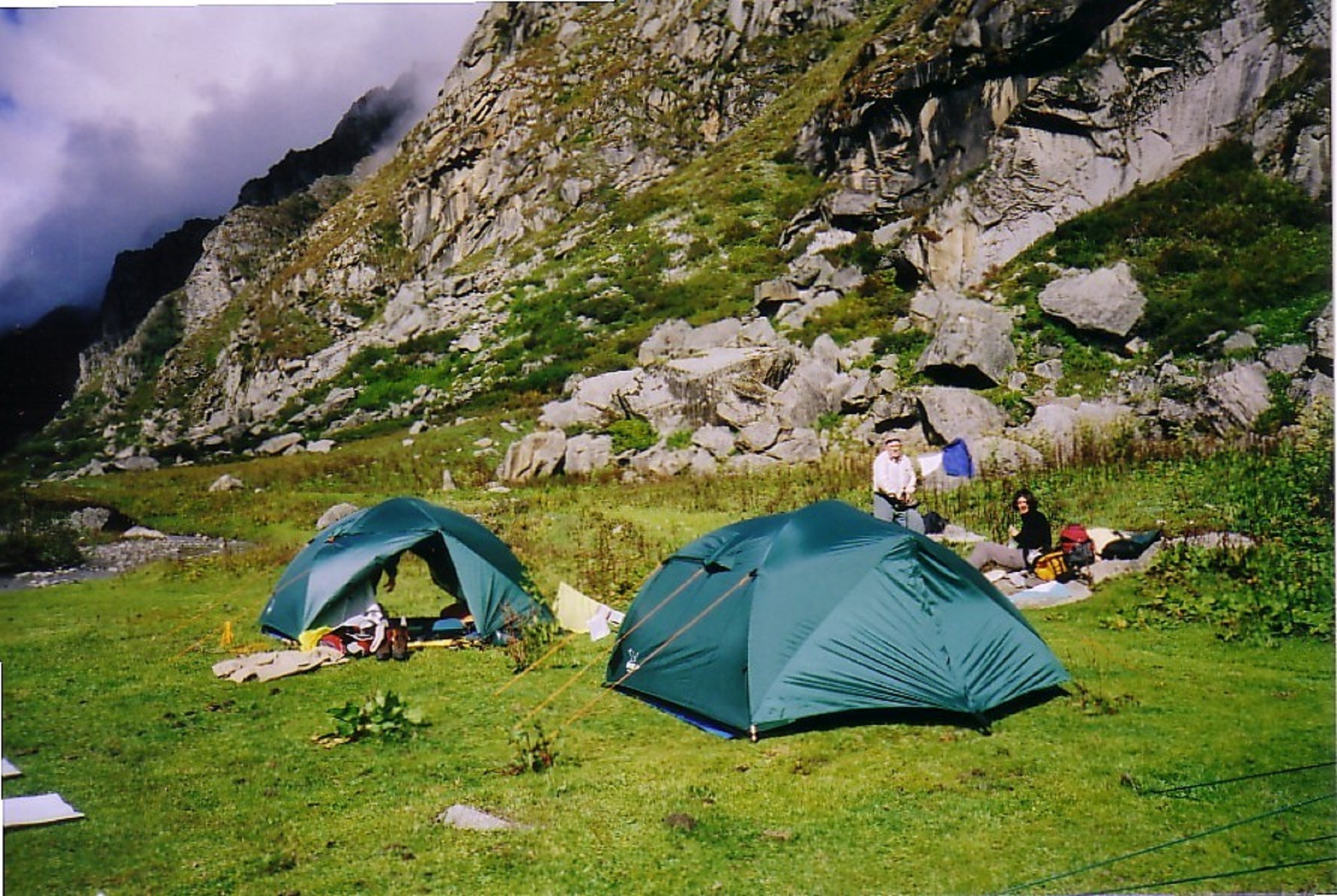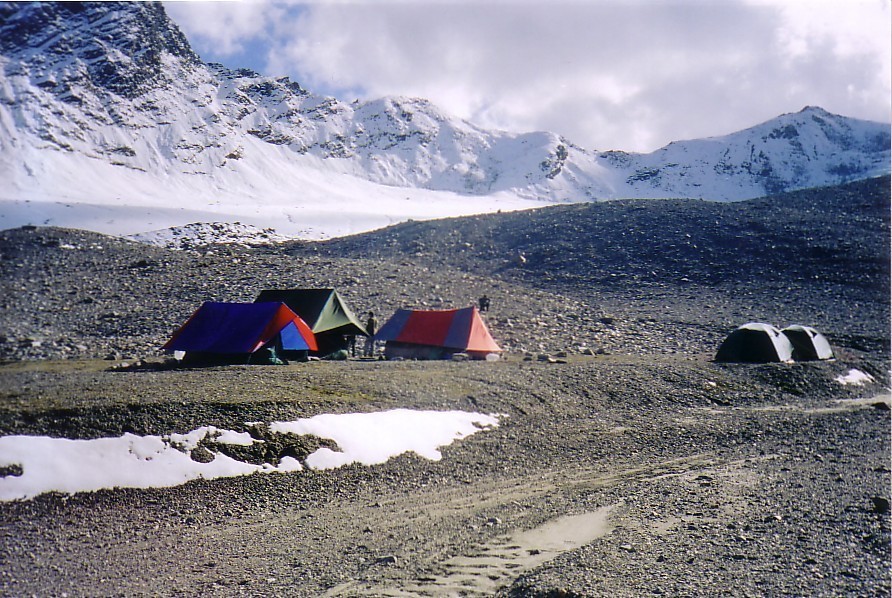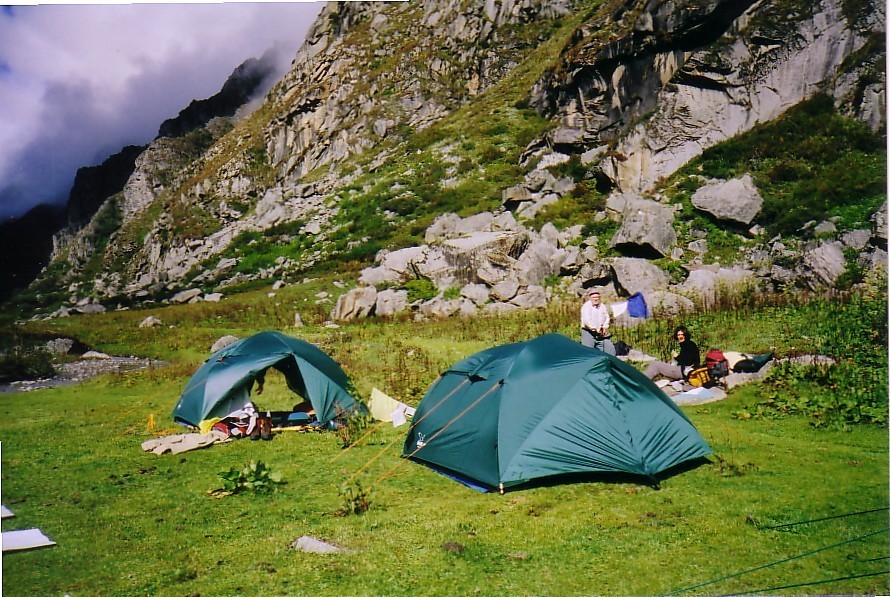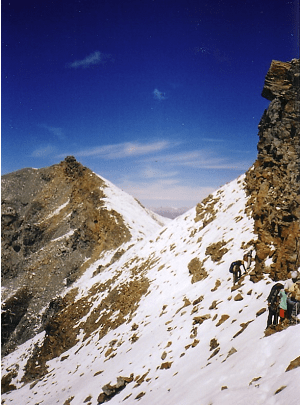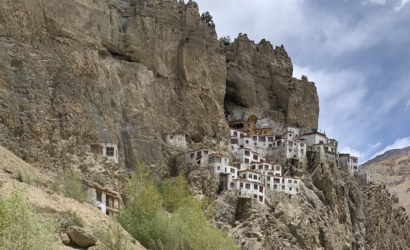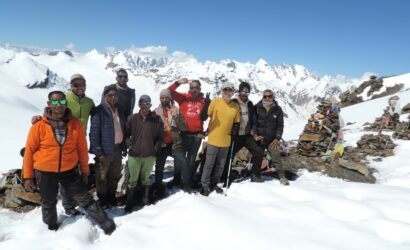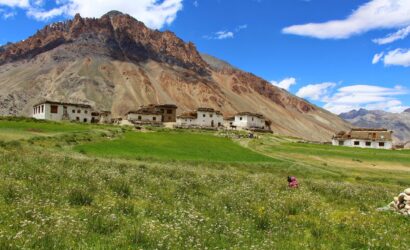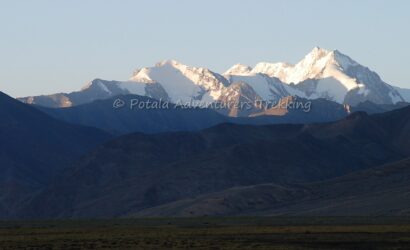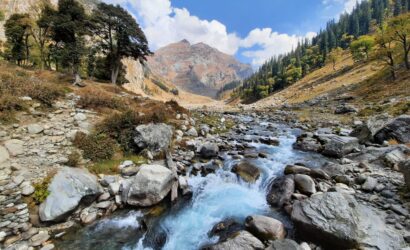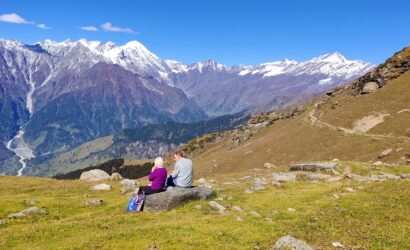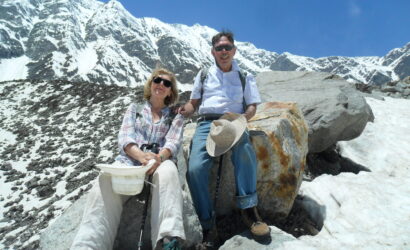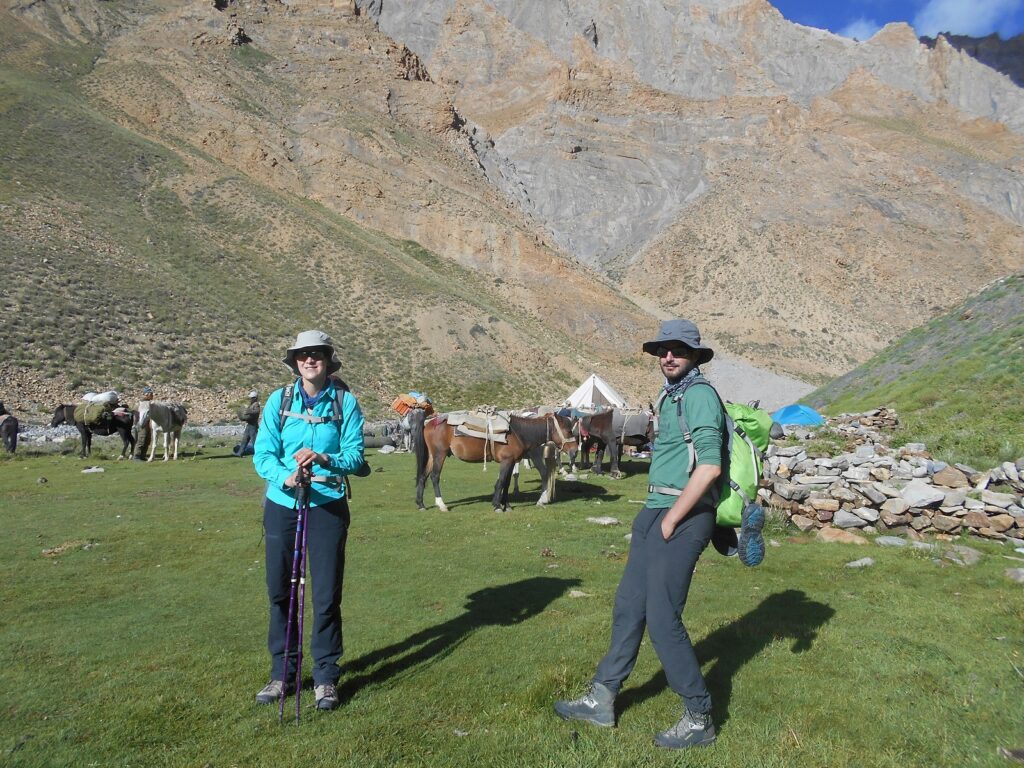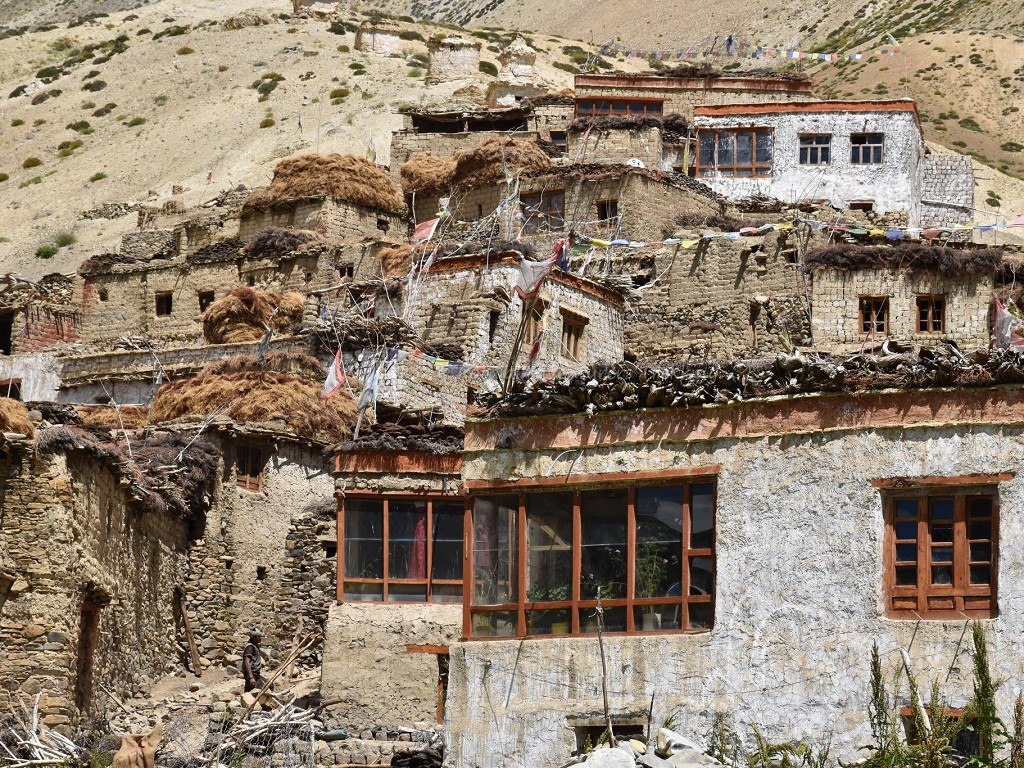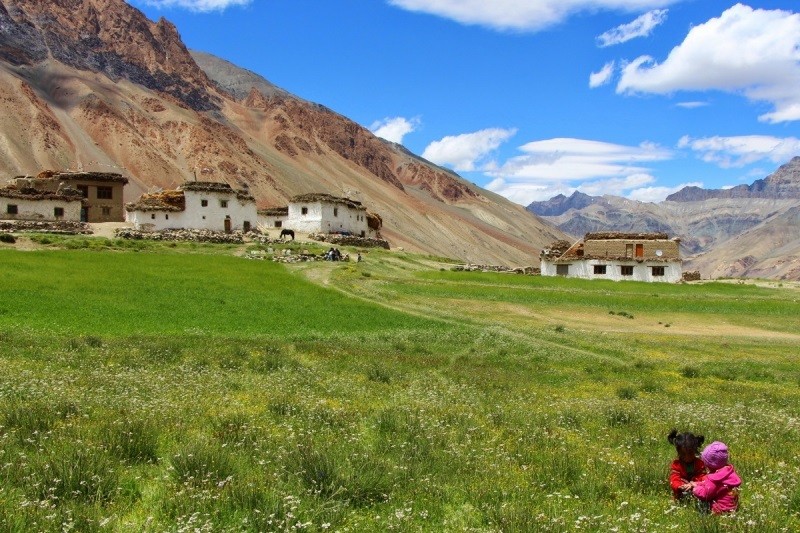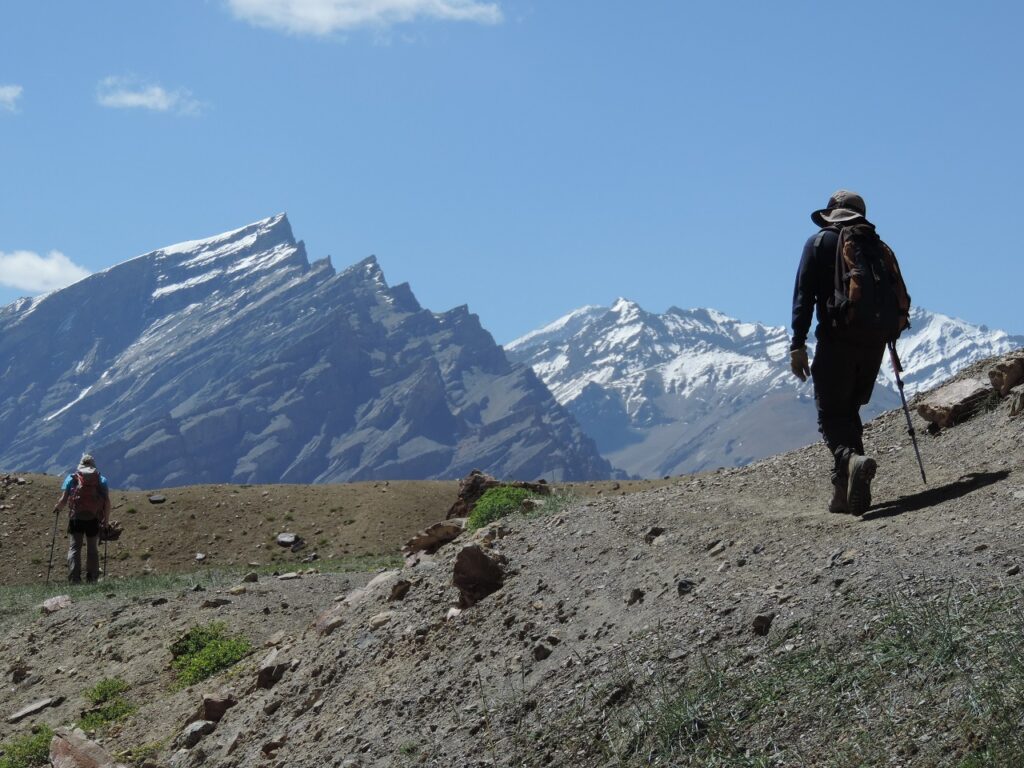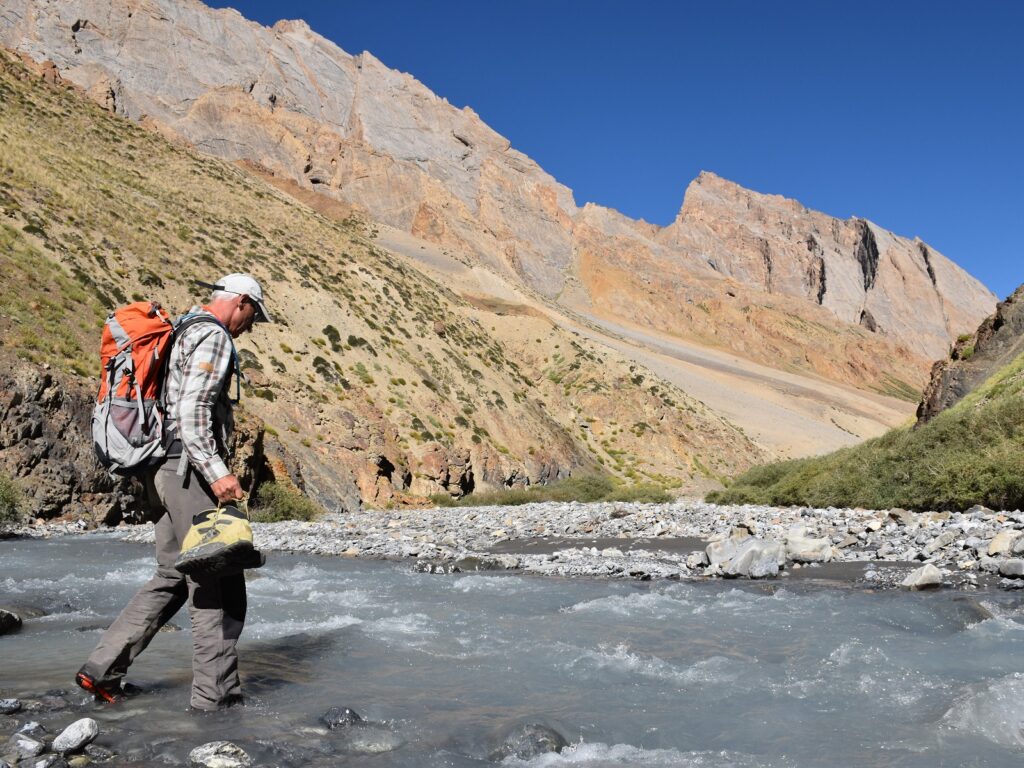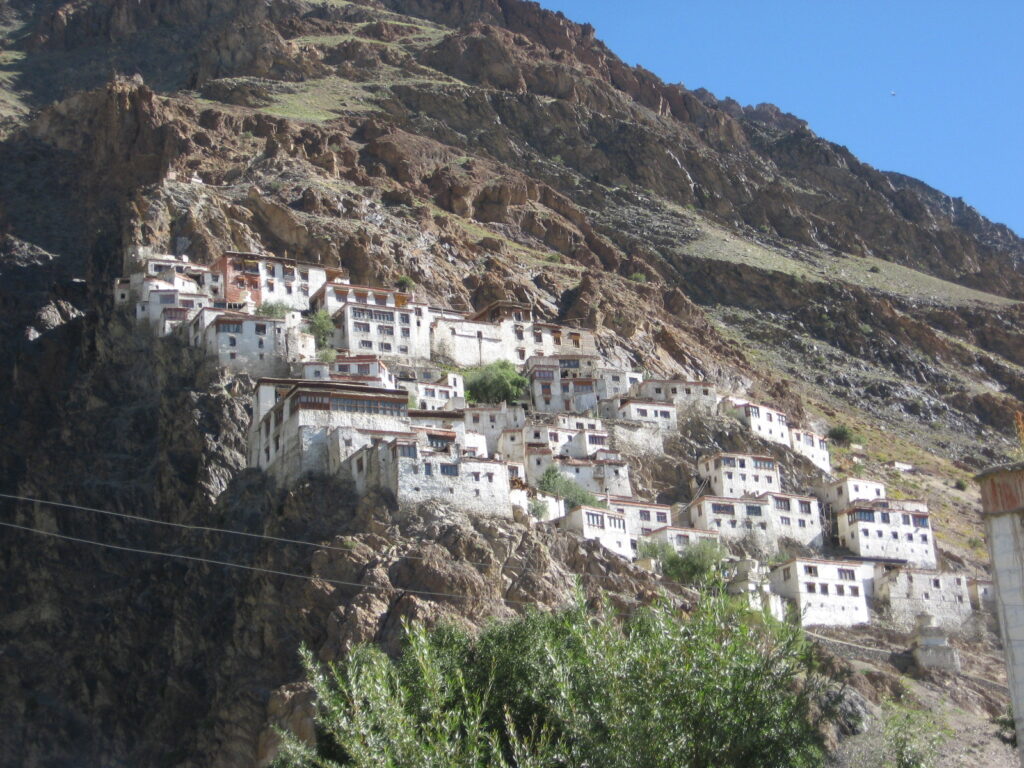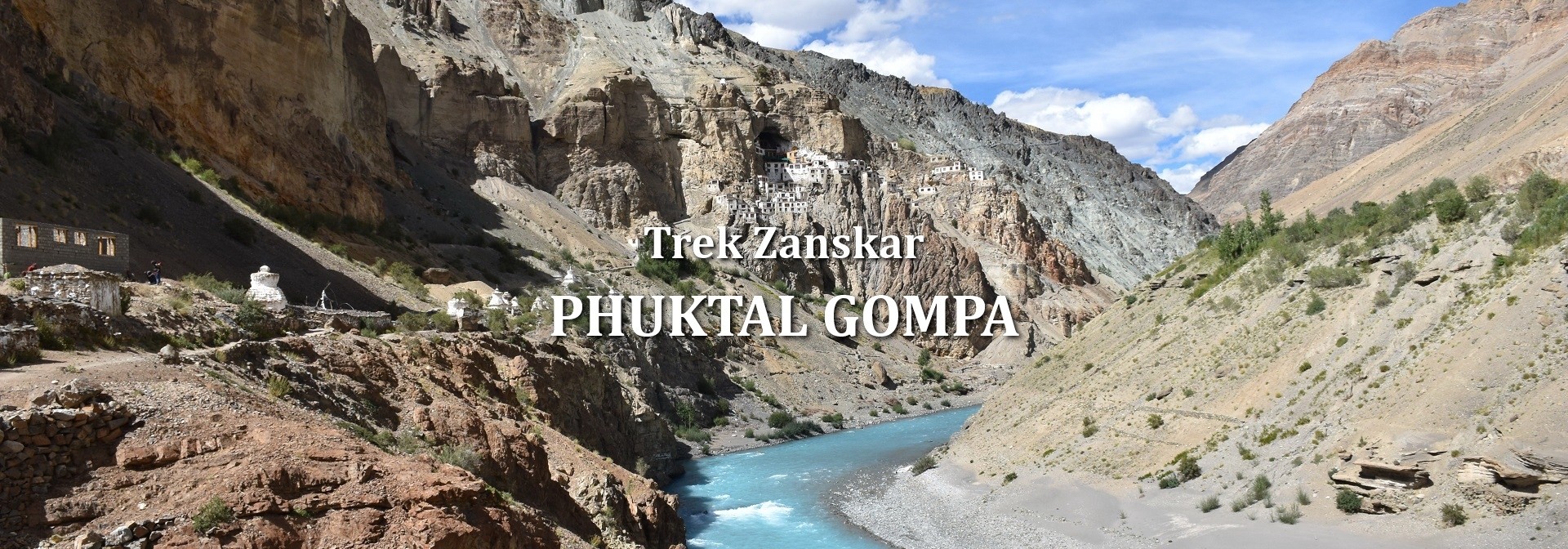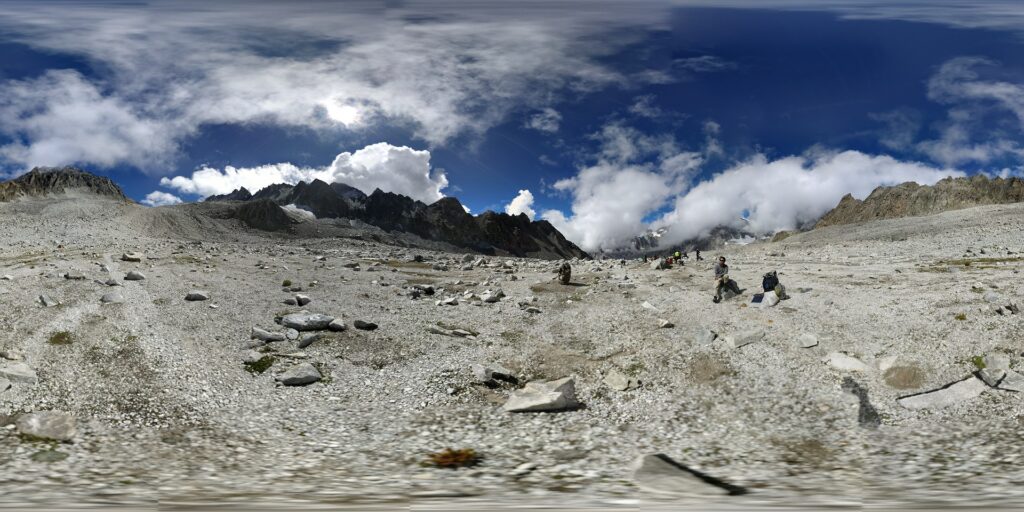Har – Ki – Dun nestles in the NW corner of Garhwal near the Satluj – Yamuna watershed and remote western hills of Uttarkashi district. The valley is dominated by Swargarohini (6252 meters).
-
Car
-
4,800 m
-
Tent
-
Dehradun
-
Dehradun
-
June, July, Sept, Oct.
-
Trekking/Hiking
-
All meals during the trek
-
Moderate to Difficult
Overview
This trek will take us from Mussoorie to Netwar / Sankri a full day drive. Setting off from Sankri on our 8 days trekking tour we cross the small hamlets of Taluka, Osla, and reach Har Ki Dun valley which also known as Dev Bhoomi (valley of Gods) and a part of Govind Pashu wildlife sanctuary and national park. The valley is surrounded by beautiful pine and dense Deodar forest. We camp at Har Ki Dun below Juandhar glacier further next to a day hike to Borasu pass which connects Sangla valley (Kinnaur; Himachal) with Har Ki Dun. Later we trek back to Osla /Seema to Ruinsara Tal (lake) a small but offering a magnificent trio of Bandar Punch (6316 meters), Black Peak (6387 meters), and Swargarohini (6252 meters). Later we cross the Bali pass at approx. 4800 meters. and descend down to Yamunotri. dominated by Bandarpunch (6,316 m), Yamunotri, the source of the Yamuna, is the first pilgrimage destination on the Char Dham Circuit, After Yamunotri, we trek down along the Yamuna river and hamlets of Jaankibai Chatti until road head of Hanuman Chatti and drive to Uttarkashi. Exploring a day at Rishikesh we finally drive back to New Delhi.
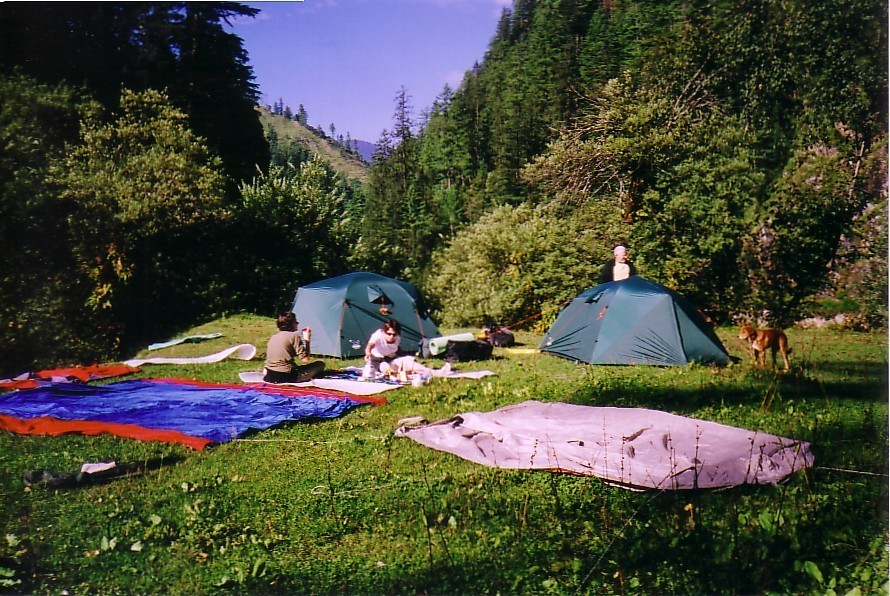
ITINERARY
Day 1: Arrival Dehardun /Haridwar by train, drive to Mussourie (2001m) or Delhi – Dehradun – Mussourie drive 245 km.
Today after breakfast and early departure, we drive to Dehradun (capital of Uttranchal state) from Delhi by deluxe bus approx. 6/7 hrs. or Train (4041/4042 Delhi- Dehradun). (2017/2018 Delhi-Dehradun) or by jeep. Arriving at Dehradun: gateway to Mussourie, we continue to drive 34 km to the beautiful hill station of Mussourie. Mussourie is situated in between Shiwalik ranges in the Himalayan foothills, which presents a spectacular and snow-clad peak of Western- Garhwal Himalaya also Doon valley below. While Dehradun is also connecting with air, the nearest airport is Jolly Grant which is 24 km from Dehradun, overnight stay in Hotel. Mussourie: Acclimatize. Sight-seeing around Mussoorie, visit Mall road: A long promenade, visit Gun Hill by ropeway to have a panoramic view of the Himalayan massif of Western Garhwal regions and walk along the ridge. There is also a Tibetan settlement in Mussoorie with Tibetan Market.
Day 2: Drive to Netwar – Sankri (160 km)
Today we drive from Mussourie to Sankri, which is our starting point of the trek. The route from Mussourie goes down to Yamuna Bridge at Yamuna River and further to Netwar at Ton valley. Naitwar situated at the confluence of Rupin and Supin streams late which becomes the Ton River. Driving continues to Naitwar which is the entrance of The Govind Wildlife Sanctuary, which is located in Purola tehsil of Uttarakashi district of Garhwal. Netwar is the entrance and starting point of the sanctuary, at a distance of 200 km from Dehradun. This wildlife sanctuary has a large number of mammal species: Snow leopard, Black bear, Brown bear, Musk deer, Bharal, Himalayan Thar. The endangered birds are Monal pheasant, Koklas pheasant, Western Tragopan, Himalayan Snowcock, Golden eagle, Bearded vulture, cuckoos, owls & bulbuls, etc.
After Naitwar we drive along the left bank of Ton river to Sankari village, overnight stay at Sankri in Garhwal Mandal Vikas Nigam (GMVN) guest house or Forest rest house. En-route visit Lakhamandal- a site associated with the heroes of the epic ‘Mahabharata’. There are ancient temples and cave formations that are of interest.
Day 3: Trek to Taluka (1900m) trek 12 kms. 4/5 hrs.
Today we start trek to Taluka village along the Supin River. The trail is a fair-weather jeep-able road, an easy day trek for acclimatization. As we go upstream there is more playful and clear water. The houses here are mainly two-storied wood structures overlooking the streams or river, overnight camp at Taluka.
There are fairly 42 well-populated villages in the area of the sanctuary, some are at a height of 2900 m. The people are living a primitive life and still in many ways depend on forests for many of their basic needs. The villagers worship the Kauravas and Duryodhana of Mahabharata is the main deity. The temples have beautiful wood carvings. 4-5 hrs of walking.
Day 4: Trek to Osla (2559m), 13 km, 4/5 hrs.
Today we cross the Siyan Gad by a bridge, the further trail climbs to Dhatmir village. Later we cross the river towards the right side of Ton river. The route is dotted with tea – shops and Dhabas. Osla has very dense forests of Walnut, Chestnut, Willows and Chinars, overnight camp.
Day 5: Trek to Har Ki dun (3506m) 14 kms, 5/6 hrs.
Today after Osla we continue the trek to Har Ki Dun. The trail and surroundings are extremely picturesque. Which is a 5/6 hrs walk. Little steams cross our path. As the trail climbs gradually through lush green terraced mountain fields and spotted with varied wildflowers. Har Ki dun has a backdrop of snowy mountain peaks. En route we will have a wonderful view towards East of Ruinsara Gad: Kalanag peak (6387 meters), (Bandar punch 6316 meters), Swargarohini (6252 meters), Juandar glacier towards North and dense forests. It is one of the most picturesque spots in the Garhwal Hills. That’s why it’s called DEV BHOOMI (valley of Gods), overnight camp.
Day 6: Trek to Borasu Pass (4725m) – Har Ki dun, 5 kms.
Har ki Dun is an ideal base for exploring the valley. The morning after breakfast trek ascends gradually towards Borasu Pass which divides Har Ki dun with Sangla Valley in Himachal Pradesh. We wind our way high above the valley to pass and enjoy the beautiful surroundings. Later afternoon we retrace down to the campsite.
Day 7: Trek to Osla (2559m) – ( Seema) , 5/6 hrs.
Retrace back to Osla than to Seema village for onwards trek to Ruinsara Lake, overnight camp.
Day 8: Trek to Ruinsara Tal (lake) (3369m) 10/11 km, 4/5 hrs.
Today we trek to Ruinsara Lake through the meadows, the lake is rather a small but surrounding is magnificent. The Ruinsara catchment has been an important area for high altitude expedition to peaks like Black Peak (Kala Nag) and Banderpunch. Continue the uphill trek to this small lake, overnight camp.
Day 9: Trek to the foot of Bali pass: 6 km.
Today we steadily climb to the foot or base of Bali pass. A majestic trio of Kalanag, Bander Punch, and Swargarohini peaks stands in front of base camp, overnight camp.
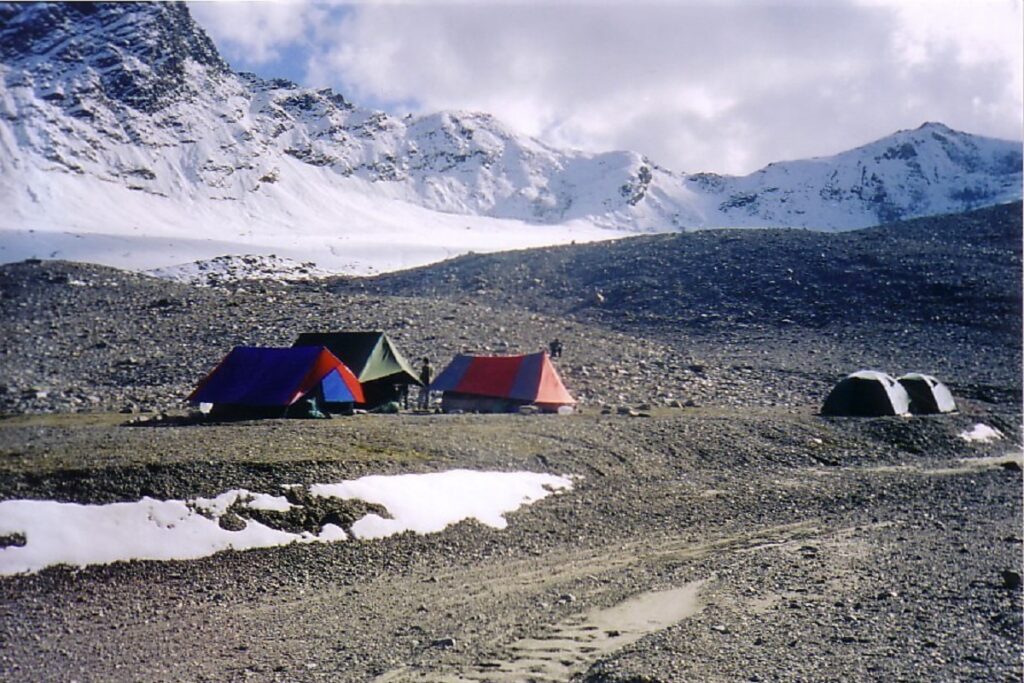
Day 10: Climb to Bali pass (4800m) – Yamunotri (3165m), 9 km.
In the early morning, we start trek for an exciting day for crossing the pass. Bali pass is about 4800m, and it is not a glaciated pass. However, it is a rocky and scree-filled pass, a pass between the Tons valley and the Yamunotri valleys. From pass a magnificent view of Swargarohini peak and below Ruinsara Gad. The route descends through open meadows and later through forests to lead near the Yamunotri shrine. After crossing the pass the trail is generally downhill to Yamunotri, the source of the river Yamuna. This is one of the four Dhams Shrines of Hindu pilgrims, is dominated by Bander punch (6361 m.). The Yamuna is also the daughter of Surya the Sun. According to legend, the temple must be built every few years. There is a hot spring at Yamunotri in which pilgrims immerse potatoes and rice in a piece of cloth. The meal, which takes only a few minutes to cook is then offered to the deity & later distributed as Prasad. Overnight camp.
Day 11: Trek to Janki Chatti (2575m)–Hanuman Chatti(2400m):14 km. 6/7 hrs.
Today after Yamunotri trek along Yamuna River fairly downhill to Jankibai Chatti then further to Hanuman Chatti. Hanuman Chatti is the last motor point before heading to Uttarkashi. It’s also a confluence of two holy rivers Yamuna and Hanuman Ganga, overnight camp.
Day 12: Drive to Uttarkashi – Rishikesh.
Today we drive to Uttarkashi, overnight camp.
Day 13: Rishikesh to New Delhi.
Today after breakfast either we drive to Haridwar and take the train to New Delhi or drive directly to New Delhi.
Trip Highlights
- Scenic Mountain Trail
- Govind Pashu Wildlife Sanctuary

